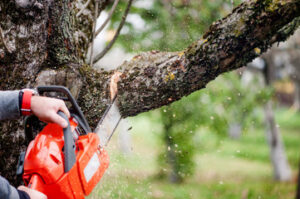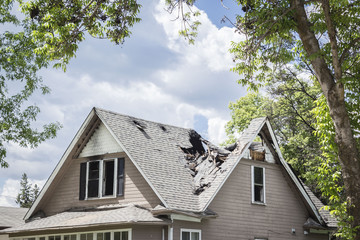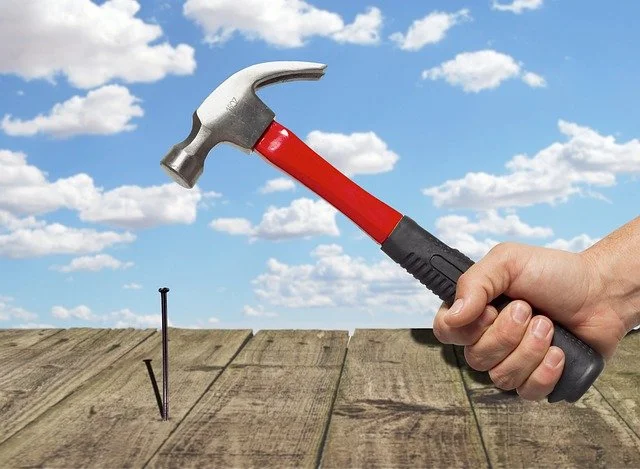Thousand Oaks Remodeling Pros is a dynamic process that transforms spaces to meet modern demands. It involves strategic planning, creative design, and the integration of new technologies. With evolving lifestyles, remodeling trends constantly shift to provide better functionality and aesthetics. The goal is to create spaces that are efficient, stylish, and tailored to personal preferences.

Modern remodeling embraces the concept of smart living. Automation systems now control lighting, temperature, and security with minimal effort. Smart home devices allow homeowners to monitor their properties remotely. These advancements enhance safety, energy efficiency, and overall convenience.
Sustainability remains at the forefront of remodeling innovations. The use of recycled and repurposed materials helps reduce environmental impact. Energy-efficient appliances, water-saving fixtures, and solar-powered solutions promote eco-friendly living. Green remodeling not only benefits the planet but also lowers long-term utility costs.
Minimalist aesthetics continue to influence remodeling choices. Spaces are designed with simplicity, functionality, and openness in mind. Neutral color palettes, sleek furniture, and minimal decor create a calming environment. This approach eliminates unnecessary clutter and enhances spatial efficiency.
Flexibility in design has become a necessity in modern homes. Multi-purpose rooms accommodate various activities without the need for constant reconfiguration. Home offices double as guest rooms, and dining areas seamlessly transition into workspaces. This adaptability ensures that every inch of space is utilized effectively.
Biophilic design connects indoor environments with nature. Large windows, skylights, and open-air layouts bring in more natural light. Indoor plants, natural wood finishes, and stone textures enhance the organic feel. These elements improve air quality, reduce stress, and promote overall well-being.
Customization is key in contemporary remodeling projects. Personal preferences guide design choices, leading to unique and expressive spaces. Handcrafted details, statement pieces, and custom-built furniture add character. Individuality plays a significant role in shaping modern interiors.
Storage solutions have evolved to maximize space efficiency. Built-in cabinets, hidden compartments, and modular shelving systems enhance organization. Compact living spaces particularly benefit from these clever storage innovations. The goal is to maintain a tidy, streamlined appearance.
Advancements in technology have revolutionized the remodeling process. Virtual reality and 3D rendering tools allow homeowners to visualize designs before construction begins. Augmented reality apps provide a preview of furniture placement and decor choices. These innovations make remodeling decisions more precise and cost-effective.
Lighting plays a crucial role in enhancing ambiance and functionality. LED fixtures, dimmable lighting systems, and automated controls improve energy efficiency. Layered lighting techniques add depth and dimension to interiors. The right lighting choices elevate the overall aesthetic of a remodeled space.
Open-concept layouts continue to dominate modern remodeling trends. Removing barriers between living areas creates a seamless flow. This design maximizes natural light, enhances social interaction, and makes spaces feel larger. It is especially popular in kitchens and shared family areas.
Luxury remodeling incorporates high-end materials and sophisticated design elements. Spa-inspired bathrooms, custom woodwork, and artistic ceilings add a touch of elegance. Premium finishes, high-tech kitchen appliances, and designer lighting elevate everyday living. These upgrades bring both comfort and sophistication to spaces.
Integrating indoor and outdoor areas has become a major focus. Patios, terraces, and garden spaces are now extensions of indoor living. Retractable glass doors and seamless flooring transitions create a unified aesthetic. This design approach enhances relaxation and entertainment possibilities.
Kitchens have become the centerpiece of modern homes. Remodeling focuses on optimizing workflow and aesthetics. Smart kitchen appliances, durable countertops, and hidden storage solutions improve functionality. Multi-functional islands provide additional workspace and social interaction areas.
Bathroom remodeling now prioritizes accessibility and luxury. Walk-in showers, floating vanities, and voice-controlled fixtures enhance comfort. Heated flooring and ambient lighting add a spa-like experience. These upgrades cater to both convenience and relaxation.
Timeless design choices ensure long-lasting appeal. Neutral tones, classic patterns, and durable materials withstand changing trends. Investing in quality finishes prevents the need for frequent renovations. A well-designed space remains stylish and functional for years to come.
Soundproofing has become a crucial remodeling consideration. Acoustic panels, noise-reducing doors, and insulated windows create quieter environments. These solutions are ideal for home offices, apartments, and urban homes. Soundproofing enhances privacy and overall comfort.
Eco-friendly flooring alternatives are gaining popularity. Bamboo, cork, and recycled wood offer sustainable and stylish solutions. These materials contribute to healthier indoor air quality. Environmentally conscious choices align with modern remodeling priorities.
Smart security systems are becoming standard in remodeling projects. Video doorbells, motion sensors, and AI-powered surveillance enhance safety. Remote monitoring allows homeowners to secure their properties anytime. These features provide peace of mind and added protection.
The evolution of home entertainment has influenced remodeling trends. Dedicated media rooms, surround sound systems, and immersive lighting create cinematic experiences. Wireless technology and hidden wiring maintain a sleek aesthetic. Modern remodeling caters to high-tech leisure and relaxation.
Furniture innovations are shaping interior remodeling trends. Space-saving designs, foldable pieces, and modular seating adapt to different needs. Compact homes benefit from transformable furniture solutions. This flexibility maximizes comfort without sacrificing style.
Wellness-focused remodeling prioritizes mental and physical well-being. Meditation rooms, home gyms, and relaxation areas encourage a balanced lifestyle. Soothing color palettes, natural materials, and aromatherapy features enhance relaxation. These wellness elements create a harmonious living environment.
Home offices have become a major consideration in remodeling. Ergonomic furniture, soundproofing, and adequate lighting improve productivity. Personal touches such as greenery and decorative accents make workspaces inviting. A well-designed home office enhances focus and efficiency.
Smart climate control is an integral part of remodeling. Automated heating, cooling, and air filtration systems improve energy use. Zoned temperature control ensures optimal comfort throughout the day. These advancements contribute to sustainable and cost-effective living.
Adaptive spaces support aging-in-place remodeling. Barrier-free showers, wider doorways, and accessible storage enhance usability. Non-slip flooring and ergonomic features improve safety and convenience. These modifications allow homeowners to enjoy their spaces comfortably as they age.
Eco-conscious landscaping complements sustainable remodeling efforts. Drought-resistant plants, rainwater harvesting, and solar-powered lighting reduce environmental impact. Thoughtful landscaping enhances curb appeal and outdoor functionality. Sustainable outdoor spaces blend beauty with responsibility.
Architectural restoration combines history with modernity. Preserving original features while integrating contemporary elements creates a timeless aesthetic. Restored moldings, reclaimed materials, and updated layouts balance old and new. This approach honors the past while embracing the future.
The rise of multi-generational living has influenced remodeling trends. Separate living quarters, dual kitchens, and privacy partitions accommodate extended families. Shared spaces encourage connection while ensuring personal independence. Thoughtful remodeling fosters harmony in multi-generational homes.
High-performance insulation improves energy efficiency in remodeled spaces. Advanced insulation materials regulate indoor temperatures year-round. This reduces heating and cooling costs while enhancing comfort. Proper insulation supports eco-friendly and cost-effective living.
Home automation continues to transform remodeling projects. Smart blinds, voice-activated controls, and remote-access features offer unparalleled convenience. These systems integrate seamlessly into modern interiors. The future of remodeling embraces technology-driven solutions.
Artistic accents personalize remodeled spaces. Statement walls, unique textures, and bespoke artwork add character. Murals, sculptures, and handcrafted details reflect individual tastes. Creativity plays a crucial role in modern remodeling aesthetics.
Pet-friendly remodeling caters to animal companions. Built-in pet beds, feeding stations, and designated play areas enhance convenience. Scratch-resistant flooring and pet-friendly fabrics ensure durability. Remodeling now considers the comfort and needs of pets.
Sustainable roofing solutions complement eco-friendly remodeling efforts. Green roofs, solar panels, and reflective materials improve energy efficiency. These upgrades reduce heat absorption and lower utility expenses. Sustainable roofing enhances both aesthetics and functionality.
Minimal waste remodeling focuses on reducing construction waste. Repurposing materials, donating old fixtures, and recycling debris minimize landfill impact. Conscious efforts ensure that remodeling remains environmentally responsible. Waste reduction aligns with sustainable living values.
The essence of remodeling lies in thoughtful innovation and purposeful design. A well-executed remodel enhances lifestyle, efficiency, and sustainability. By embracing new technologies, materials, and concepts, spaces evolve into masterpieces of modern living. Every transformation reflects a vision of functionality, beauty, and individuality.









